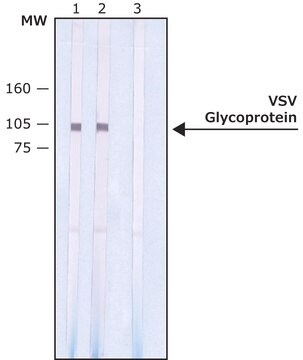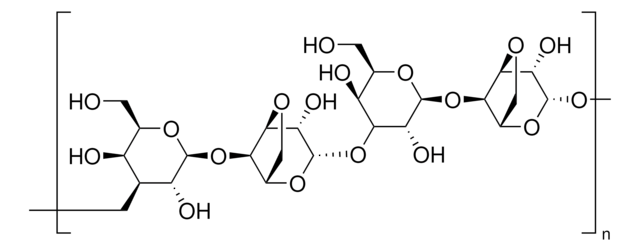A1970
Anti-VSV-Glycoprotein−Agarose antibody, Mouse monoclonal
clone P5D4, purified from hybridoma cell culture, PBS suspension
Synonim(y):
Monoclonal Anti-VSV Glycoprotein
About This Item
Polecane produkty
pochodzenie biologiczne
mouse
białko sprzężone
agarose conjugate
forma przeciwciała
purified immunoglobulin
rodzaj przeciwciała
primary antibodies
klon
P5D4, monoclonal
Formularz
PBS suspension
klasy chemiczne analitów
proteins (VSV-G)
metody
immunoprecipitation (IP): suitable
protein purification: suitable
izotyp
IgG1
pojemność
≥15 nmol/mL, resin binding capacity (VSV-G tagged fusion protein)
Warunki transportu
wet ice
temp. przechowywania
2-8°C
Szukasz podobnych produktów? Odwiedź Przewodnik dotyczący porównywania produktów
Opis ogólny
Specyficzność
Immunogen
Zastosowanie
Immunoprecypitacja (1 artykuł)
Postać fizyczna
Uwaga dotycząca przygotowania
Nie możesz znaleźć właściwego produktu?
Wypróbuj nasz Narzędzie selektora produktów.
Kod klasy składowania
10 - Combustible liquids
Klasa zagrożenia wodnego (WGK)
nwg
Temperatura zapłonu (°F)
Not applicable
Temperatura zapłonu (°C)
Not applicable
Wybierz jedną z najnowszych wersji:
Masz już ten produkt?
Dokumenty związane z niedawno zakupionymi produktami zostały zamieszczone w Bibliotece dokumentów.
Nasz zespół naukowców ma doświadczenie we wszystkich obszarach badań, w tym w naukach przyrodniczych, materiałoznawstwie, syntezie chemicznej, chromatografii, analityce i wielu innych dziedzinach.
Skontaktuj się z zespołem ds. pomocy technicznej







